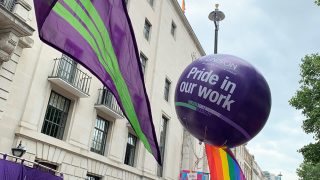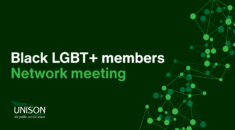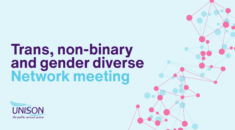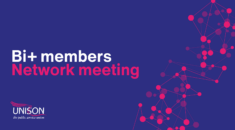UNISON’s 2014 LGBT conference charged the national LGBT committee with moving forward on introducing fields for sexual orientation and gender identity/gender history on UNISON’s membership database, the RMS, ensuring the security of sensitive personal information.
The purpose is to support UNISON’s work for LGBT equality.
This data can be used to check success in meeting objectives on recruitment, participation and fair representation, identify areas of success and challenge, track trends and provide an additional way of targeting information to members.
A growing number of trade unions already conduct this type of monitoring, as do significant numbers of employers.
We will never have complete data for all members, but it will improve over time if members have confidence in the purpose and in security.
Information on members’ ethnicity has increased markedly in recent years and is now available for over 60% of full members. Most of the missing data is for people who have been members for many years. New joiners usually supply it.
How will the information be entered onto the membership database?
Initially, only the member themselves will be able to add LGBT information to their own online RMS (Web Access RMS or WARMS) record. This is in recognition of the personal nature of this information.
Other monitoring information, such as ethnicity, can be entered by any authorised RMS user as well as the individual member. Authorised RMS users are certain UNISON staff and some branch RMS users (who can only view information for members in their branch).
The member will add their own LGBT monitoring information via “My.Details”, which includes other sensitive personal information such as bank details.
Around 10% of members have signed up for “My.UNISON” so far, with 450 new sign-ups per week. There are a number of initiatives to increase online engagement.
We will encourage LGBT members to update their details in this way, but it remains entirely their choice if they wish to.
Following the evaluation of a successful pilot, we could offer an additional route: the individual member could phone UNISONDirect to ask for their record to be amended.
Who will see the information?
Personal LGBT information will have the highest level of security on the RMS. The only people who will be able to see the information are the individual member themself, the UNISON RMS operations team (nine staff members) and the UNISON Centre LGBT team (two staff members).
How will the information be used?
In the pilot phase, data will only be used to monitor members’ take-up of the option to add LGBT information. Anonymised reports can be made available to the NEC, the national LGBT committee and regional LGBT groups.
Following evaluation of the pilot, other uses can be trialled in regions or branches with good take-up.
Our online membership system WARMS can email groups of members without disclosing their identity to the sender.
So, for example, a region could use WARMS to email all members who have indicated they are LGBT in that particular region, without their names or membership details being disclosed to the region. The region could use this to invite members to sign up for an event or mailing list.
Once this monitoring data is available for a good proportion of members, it can be used for mapping and checking fair representation.
What will the questions say?
It is proposed that members will be invited to tick boxes if they identify as lesbian, gay or bisexual (one question, with three optional answers); and if they identify as transgender (a separate question with one optional answer).
The questions will be preceded by a brief explanation of their purpose, our meaning of the terms and the security and confidentiality of the members’ answers.
The explanation will be similar to that on the standard fair representation form:
“UNISON is committed to achieving equality in all our structures. Part of this is monitoring and evaluating participation. We appreciate the categories below are limited, but within these constraints, please answer the questions that apply to you. All questions are optional.”
What is the proposed timescale for this?
If the outcome of the consultation is positive, the proposal will be submitted to the NEC for its approval before a soft launch among LGBT activists, for example via those who receive the monthly LGBT ebulletin and those attending LGBT conference.
After an initial trial, it will be promoted widely via a publicity campaign, possible linked to 2016 LGBT history month in February or IDAHOT in May.
HOW TO RESPOND TO THE CONSULTATION
We are seeking the views of branch and regional LGBT groups, the national LGBT group caucuses and individual LGBT members on these proposals.
In particular, please let us know:
- what benefits you see to introducing LGBT monitoring: how the information can be used;
- whether you agree with the proposed monitoring questions;
- if you have any questions or concerns about the security of the data or other aspect.
Send comments or questions to:
Carola Towle
National officer, LGBT equality
by 30 June 2015





